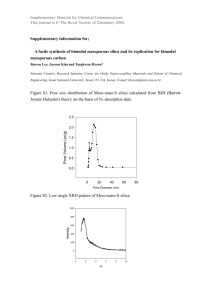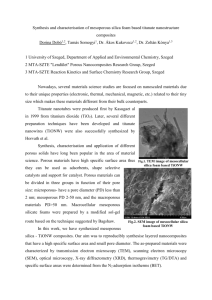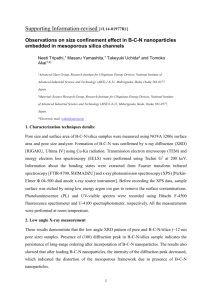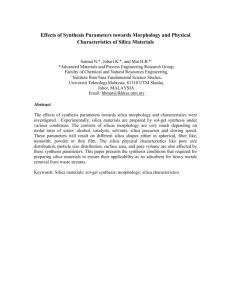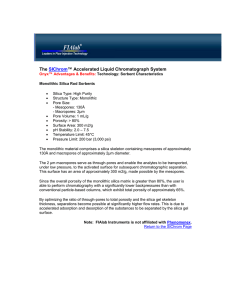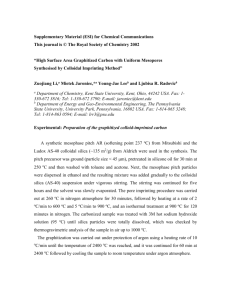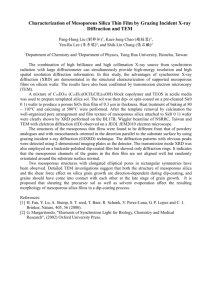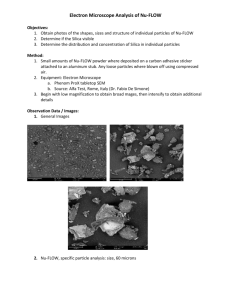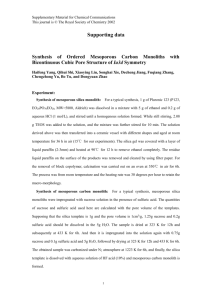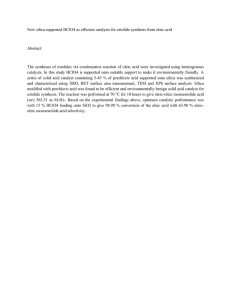Formation Mechanism of Large Mesoporous Silica Materials
advertisement
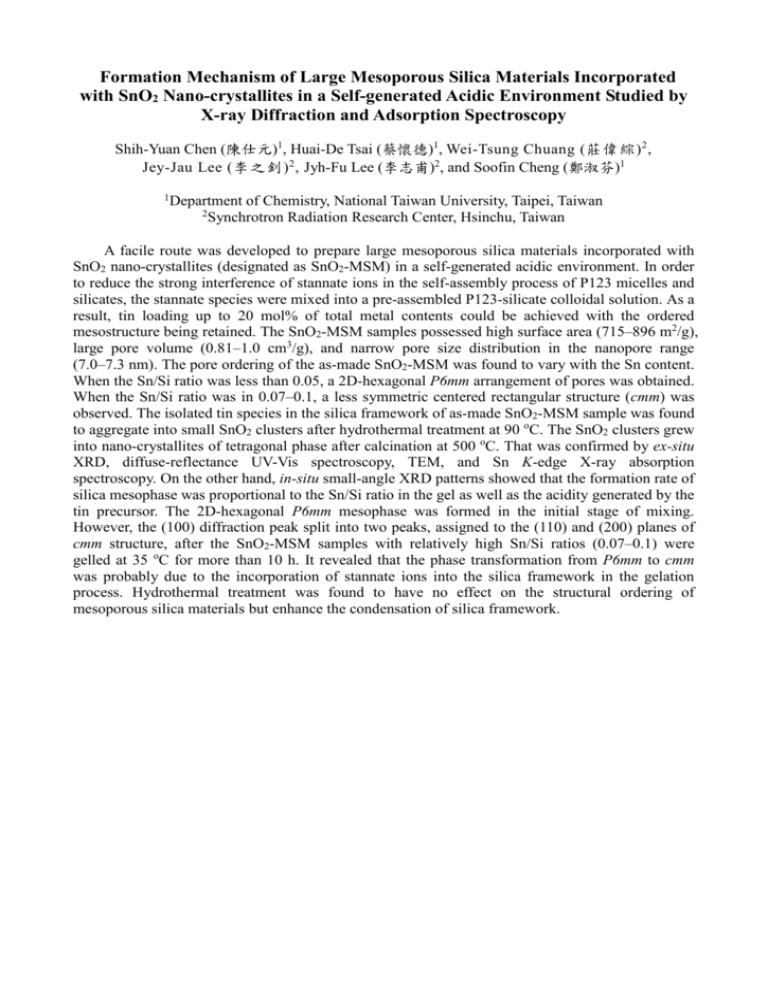
Formation Mechanism of Large Mesoporous Silica Materials Incorporated with SnO2 Nano-crystallites in a Self-generated Acidic Environment Studied by X-ray Diffraction and Adsorption Spectroscopy Shih-Yuan Chen (陳仕元)1, Huai-De Tsai (蔡懷德)1, Wei-Tsung Chuang (莊偉綜) 2 , Jey-Jau Lee (李之釗) 2 , Jyh-Fu Lee (李志甫)2, and Soofin Cheng (鄭淑芬)1 1 Department of Chemistry, National Taiwan University, Taipei, Taiwan 2 Synchrotron Radiation Research Center, Hsinchu, Taiwan A facile route was developed to prepare large mesoporous silica materials incorporated with SnO2 nano-crystallites (designated as SnO2-MSM) in a self-generated acidic environment. In order to reduce the strong interference of stannate ions in the self-assembly process of P123 micelles and silicates, the stannate species were mixed into a pre-assembled P123-silicate colloidal solution. As a result, tin loading up to 20 mol% of total metal contents could be achieved with the ordered mesostructure being retained. The SnO2-MSM samples possessed high surface area (715–896 m2/g), large pore volume (0.81–1.0 cm3/g), and narrow pore size distribution in the nanopore range (7.0–7.3 nm). The pore ordering of the as-made SnO2-MSM was found to vary with the Sn content. When the Sn/Si ratio was less than 0.05, a 2D-hexagonal P6mm arrangement of pores was obtained. When the Sn/Si ratio was in 0.07–0.1, a less symmetric centered rectangular structure (cmm) was observed. The isolated tin species in the silica framework of as-made SnO2-MSM sample was found to aggregate into small SnO2 clusters after hydrothermal treatment at 90 oC. The SnO2 clusters grew into nano-crystallites of tetragonal phase after calcination at 500 oC. That was confirmed by ex-situ XRD, diffuse-reflectance UV-Vis spectroscopy, TEM, and Sn K-edge X-ray absorption spectroscopy. On the other hand, in-situ small-angle XRD patterns showed that the formation rate of silica mesophase was proportional to the Sn/Si ratio in the gel as well as the acidity generated by the tin precursor. The 2D-hexagonal P6mm mesophase was formed in the initial stage of mixing. However, the (100) diffraction peak split into two peaks, assigned to the (110) and (200) planes of cmm structure, after the SnO2-MSM samples with relatively high Sn/Si ratios (0.07–0.1) were gelled at 35 oC for more than 10 h. It revealed that the phase transformation from P6mm to cmm was probably due to the incorporation of stannate ions into the silica framework in the gelation process. Hydrothermal treatment was found to have no effect on the structural ordering of mesoporous silica materials but enhance the condensation of silica framework.
